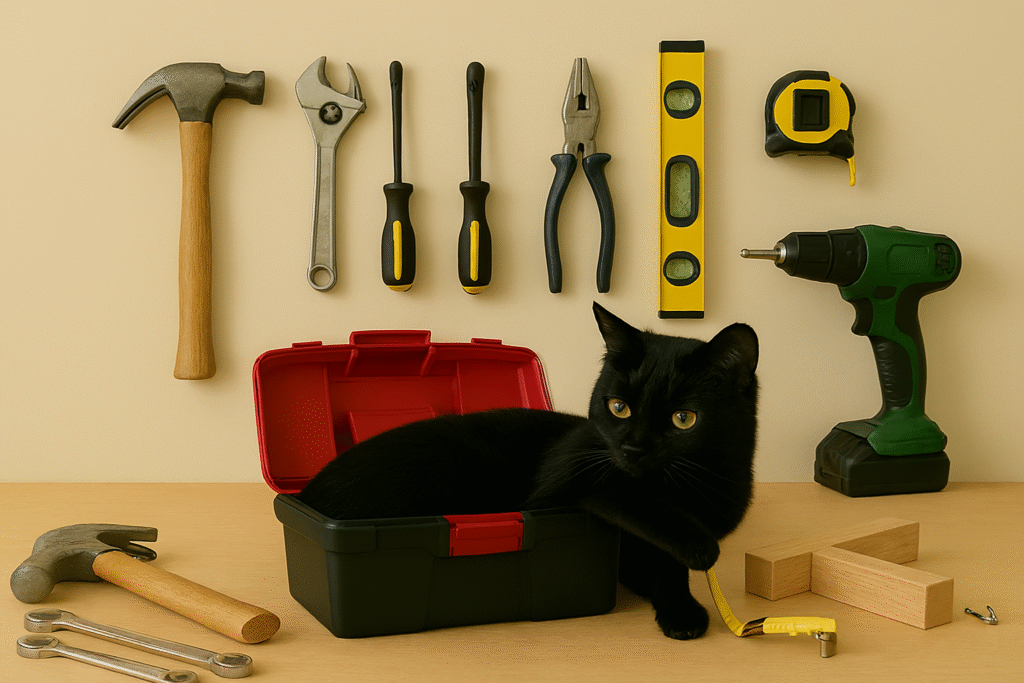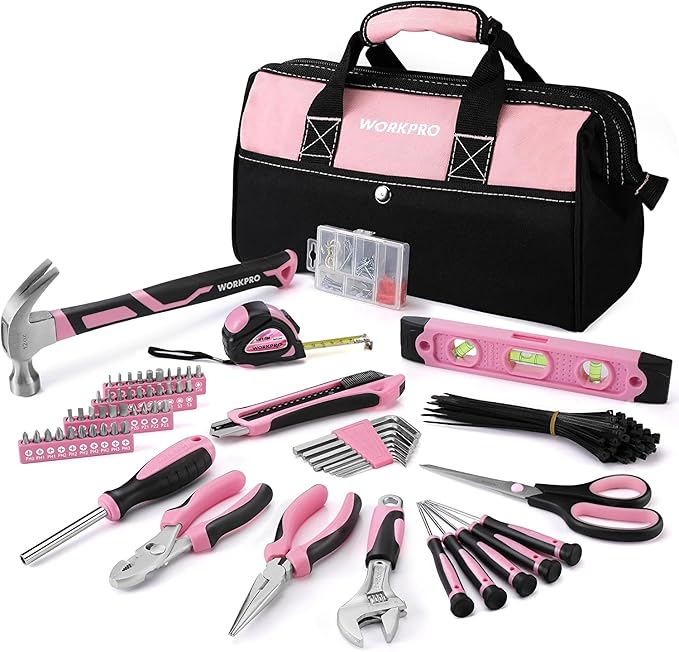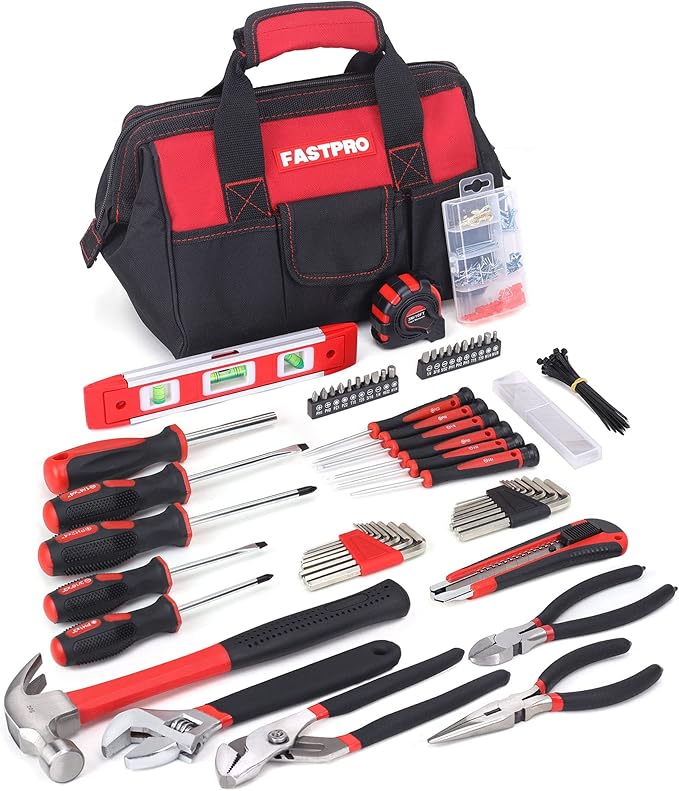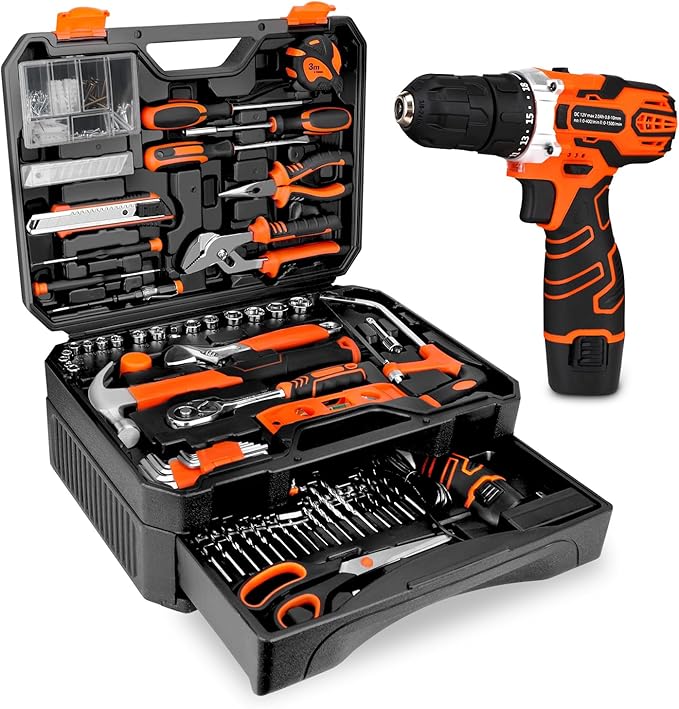The Must-Have Tools Every Homeowner Should Own

If you’ve just moved into your first home, or you’re looking to up your DIY game, figuring out which tools really matter can feel pretty overwhelming. Shelves at the hardware store are jammed with gadgets, but not every shiny new thing is worth the money or the space in your garage. A good set of tools makes it way easier to handle unexpected repairs, hang pictures without crooked results, and even tackle bigger home improvement projects without calling in a pro for everything.
I didn’t grow up knowing the difference between a Phillips and a flathead screwdriver, but after years of homeownership (and a few busted knuckles), I’ve learned what tools I reach for again and again. I’ve also learned you don’t need a massive collection to feel prepared, just a carefully chosen group that covers the basics.
Here’s my breakdown of essential tools every homeowner should consider, what they’re actually used for, and how to buy smart the first time. Whether you’re snagging a starter set for your first house or upgrading what you’ve got, this guide will help you make sense of your options and avoid buyer’s regret. Tools let you turn your house into a home—time to roll!
1. The Essential Hand Tools Every Homeowner Needs
Hand tools are the backbone of any toolkit. These are the items you’ll reach for most often, no batteries or cords required. I keep mine close by because they make everyday problems, like a wobbly cabinet door or a stuck window, easy to fix without overthinking it.
Basic Hand Tools to Start With
- Hammer: The classic all purpose tool. Choose one with a comfortable grip and a smooth face so you don’t leave ugly marks on surfaces. Weightwise, a 16-ounce hammer works for most tasks around the house.
- Multibit Screwdriver: Instead of juggling a dozen screwdrivers, a multibit model means you can swap between Phillips, flathead, and even Torx or square bits with a quick change. Super handy for furniture assembly and tightening cabinet handles.
- Tape Measure: Measuring is half of homeownership. Look for a sturdy, easy locking 25foot tape. The 25footer covers most room sizes and even lets you reach those awkward ceiling marks.
- Adjustable Wrench: Whether it’s a leaky faucet or a bike repair, an adjustable wrench handles nuts and bolts of different sizes without taking up your whole tool drawer.
- Pliers Set: I keep a set that includes slip joint pliers, needle nose pliers, and a pair of wire cutters. Slip joint pliers are great for gripping things, while needle nose pliers fit into tight spaces; super useful for small fixit jobs or fiddly repairs.
- Utility Knife: Cutting open packages, trimming carpet edges, or scoring drywall is way easier and safer with a sharp utility knife. Grab one with refills or snap off blades for hassle free maintenance.
- Level: If you like your pictures hanging straight (or you’re mounting shelves), a basic 2foot level saves frustration. You can use app levels in a pinch, but a real one gives more reliable results.
Optional, but Nice to Have Hand Tools
- Stud Finder: For mounting TVs, floating shelves, or safety rails. Worth owning if you want to avoid drilling into pipes or wires.
- Pry Bar or Wonder Bar: Makes removing molding, baseboards, or even old nails way easier and safer.
- Hex (Allen) Wrench Set: These are the “L” shaped wrenches you’ll use for assembling furniture or adjusting door handles.
Quality matters more than quantity here. Brands like Stanley, Craftsman, or even Husky offer starter sets that will last for years without breaking the bank.
263-Piece Home Repairing Tool Set with Wide Mouth Open Storage Bag, Household Tool Kit – Pink Ribbon
215-Piece Home Repairing Tool Set with 12-Inch Wide Mouth Open Storage Bag,Household Hand Tool Kit,Red
Toolbox Storage Case with Drawer, General Household Drill Set for DIY Projects, Home Repairs, Handyman
2. Must-Have Power Tools for Homeowners
Hand tools get a lot done, but when it comes to repairs and improvements that would take forever by hand, power tools step in to save time (and in my case, some arm cramps). If you’re just starting out, you don’t need every gadget from the store. A few basic, reliable power tools will cover most situations.
Core Power Tools for Beginners
- Cordless Drill/Driver: This is my desert island power tool. It’s useful for hanging curtain rods, assembling furniture, drilling pilot holes, or mixing paint with the right attachment. Get one with a set of drill and screwdriver bits. Lithiumion battery models balance good power with decent battery life and weight.
- Orbital Sander: Refinishing furniture, smoothing down patched walls, or prepping wood surfaces becomes way less dusty and way more efficient with a simple palm sander. Hook and loop sanding pads make switching grits super easy.
- Jigsaw: For cutting curves or straight lines in wood, laminate, or even some plastics, a jigsaw is beginner friendly and doesn’t need a lot of space. If you’ve got trim work to fix, shelves to cut down, or a craft project to tackle, this comes in handy.
- Shop Vacuum (Wet/Dry Vac): Not just for cleaning out the garage. When you’re drilling, sanding, or making a mess with any project, a small shop vac makes cleanup quick and stress free.
Power Tool Safety Basics
- Wear eye protection and earplugs if you plan to run noisy tools.
- Keep your workspace well lit and free of distractions. Mistakes hurt more when power tools are involved.
- Read the manufacturer’s instructions, even if you think you know what you’re doing. Some surprises aren’t fun.
If you only want to buy one power tool, make it the cordless drill/driver set. Adding battery powered tools from the same brand later means you can share batteries and chargers, saving cash and storage space.
3. Specialized Tools Worth Considering
Most people can get by with the basics 95% of the time. But once you start making upgrades or exploring new hobbies, specialized tools can help you do cleaner, safer, and faster work. I’ve picked up a few specialty tools over the years that I’ve found surprisingly useful for specific jobs. As you build your confidence, you might stumble upon new tasks where these additions feel like gamechangers.
- Stud Finder: Hanging shelves or TVs is a lot less risky with a stud finder. It helps you spot wood framing behind drywall, so your heavy stuff stays put.
- Caulking Gun: For sealing trim or tackling bathroom tub refreshes, a simple caulking gun (plus a couple of tubes of caulk) can handle leaks and gaps with a pro finish.
- Pipe Wrench: If you ever need to tackle basic plumbing repairs, like a leaky faucet, a pipe wrench gives you the grip that regular pliers just don’t provide.
- Wire Stripper/Crimper: Anyone planning to swap out light fixtures, fix a lamp, or do any basic home electrical projects will find this tool super useful.
When to Borrow or Rent
Some tools, like wet saws for tiling or power augers for yard work, just don’t make sense to buy unless you plan to use them a lot. Local hardware stores or tool libraries will rent out big ticket tools for a weekend, and that’s usually enough for most DIYers. It saves money and space for the stuff you’ll actually use often.
4. Building a Reliable Homeowner Tool Set
I bought my first house with a few hand me down tools, but it didn’t take long before I ran into a project I couldn’t handle with what I had. Choosing a tool set is part personal preference and part practicality, but a few buying tips helped me skip the trial and error phase most folks deal with.
Choosing a Starter Tool Set
- Look For Core Tools: Kits should have a hammer, pliers, both types of screwdrivers, and a tape measure at minimum.
- Skip Gimmicks: Combo kits with a hundred odd little parts sound helpful but often just collect dust. Simpler is usually better starting out.
- Check Quality, Not Just Price: Mid-tier brands like DeWalt, Craftsman, and Kobalt offer kits made to last years instead of months. Go for metal tools with comfortable grips, and avoid dollar store stuff unless it’s an emergency.
Tool Storage Solutions
- Basic toolboxes made of metal or heavy duty plastic are good enough for small sets. If your tools are scattered everywhere, a pegboard or wall rack in the garage helps keep things tidy and easy to grab.
- Use tool organizers or cases for stuff like drill bits and screwdrivers so you’re not hunting through a big mess when something needs fixing.
5. What Belongs on Every New Home Checklist
When moving into a new place, there’s always a sense that something important got left behind. Here’s the quick checklist I wish I had my first time around, so you never get caught mid project without the right basics.
- Smoke/Carbon Monoxide Detectors: Not technically a tool, but you’ll want these installed and tested right away for peace of mind. Keep a pack of fresh 9V batteries on hand, too.
- Flashlight and Headlamp: For power outages, crawlspaces, or early morning fixit jobs where you need both hands free.
- Extension Cord and Power Strips: Outlets aren’t always where you need them, and these keep new gadgets and tools powered up.
- Step Ladder: Even if you’re tall, a two or three step ladder helps when it’s time to swap light bulbs or hang curtains.
- Basic Cleaning Supplies: Not glamorous, but scrub brushes, buckets, and a spray cleaner let you wipe down spaces before and after big jobs. If you’re dealing with move in messes, you’ll be grateful.
6. Tips for Buying Tools That Actually Last
I’ve had enough cheap tools fall apart on me that I pay more attention to what I’m buying now. Spending smart at the beginning saves you headaches down the road. Here’s what I look for to get good value for the money:
How to Tell If a Tool Is Worth It
- Heft and Feel: A good tool feels sturdy without being too heavy. If it has rough edges, loose parts, or flimsy grips, I usually pass.
- Warranty or Guarantee: Brands that back their products with a lifetime warranty often make higher quality gear. Craftsman and Milwaukee are both known for reliable service here.
- Check Reviews: If you’re shopping online, looking at honest user reviews (especially when pictures are shared) helps you dodge lemons.
- Stick to Basics at First: Only upgrade to pro level tools if you find yourself using a tool a lot. For first time homeowners, investing in a solid starter kit is usually just right.
Where to Buy Your First Tools
- Local hardware stores and big home centers are handy, but don’t ignore online deals, especially if you’re after a particular kit or brand. Just watch for return policies and shipping times.
- Yard sales, estate sales, or online marketplaces can be gold mines for older tools that have stood the test of time. Just make sure to check condition before buying secondhand.
7. Essential Tips for Tool Maintenance and Organization
Owning tools is only helpful if they’re in good shape when you need them. I learned the hard way that rusted or dull tools slow down projects and make simple tasks a pain. A little regular upkeep means your tools will always be ready. Keeping an eye out for signs of wear can also save you from unexpected mishaps at a crucial moment.
Basic Maintenance Steps
- Clean Tools After Use: Wipe down dirt and moisture to prevent rust (especially on blades and metal parts).
- Sharpen Blades: Utility knives, chisels, and even mower blades need a quick touchup now and then. Kits are cheap, and plenty of YouTube guides walk you through it.
- Oil Moving Parts: Things like pliers and adjustable wrenches work better when lubricated occasionally. A drop of machine oil keeps everything moving smoothly.
- Battery Care: Keep rechargeable tool batteries away from extremes in temperature (like a freezing garage) and store them partially charged to extend their life.
Storing Tools to Avoid Headaches
- Toolboxes and wall racks are great, but even a simple bucket can hold your core set if you’re just getting started. Label drawers or containers so it’s not a scavenger hunt when a crisis hits. Also, keep small pieces (like screws, anchors, or spare bits) sorted in clear bins or jars to make spotting what you need a breeze.
- If you’ve got kids or pets, store sharp items and power tools where they’re out of easy reach. Safety should always come first, especially in busy households.
8. Top Hand Tool for Everyday Fixes
If I could only pick one hand tool to keep around, my vote goes to a multibit screwdriver. Every single home has screws that need tightening (door handles, light plates, hinges), and this tool solves most of those problems. It never runs out of batteries, and with a handful of interchangeable heads, it takes on more jobs than you’d expect. When buying one, check for a comfortable grip and quality steel bits that won’t strip easily. You’ll use it more than you realize.
9. Building Your Collection Over Time
There’s no rush to own every tool listed here on day one. The best approach is to cover the basics first, then add more specialized tools as projects come up. For example, you might pick up a stud finder or pipe wrench only when you’ve got a job that calls for it. This method saves money, keeps things simple, and helps you learn what works for your home’s unique needs. Dig into small projects before you buy something new and you’ll appreciate every addition more.
10. Summary for First-Time Homeowners
A solid set of tools gives you confidence in your new space and lets you handle small problems before they turn into bigger headaches. Focusing on core hand tools, a couple of flexible power tools, and a few “nice to haves” puts you in good shape right from the start. Over time, you’ll learn what fits your home and routine, making upgrades as you go. No homeowner toolkit needs to be giant or overly expensive; just dependable and ready for anything.
What’s your go-to tool at home, or is there one you wish you bought sooner? Drop your thoughts or tool recommendations below; tips from real homeowners always help!
Next Page: Top Tool Picks for Projects 2025 >>


